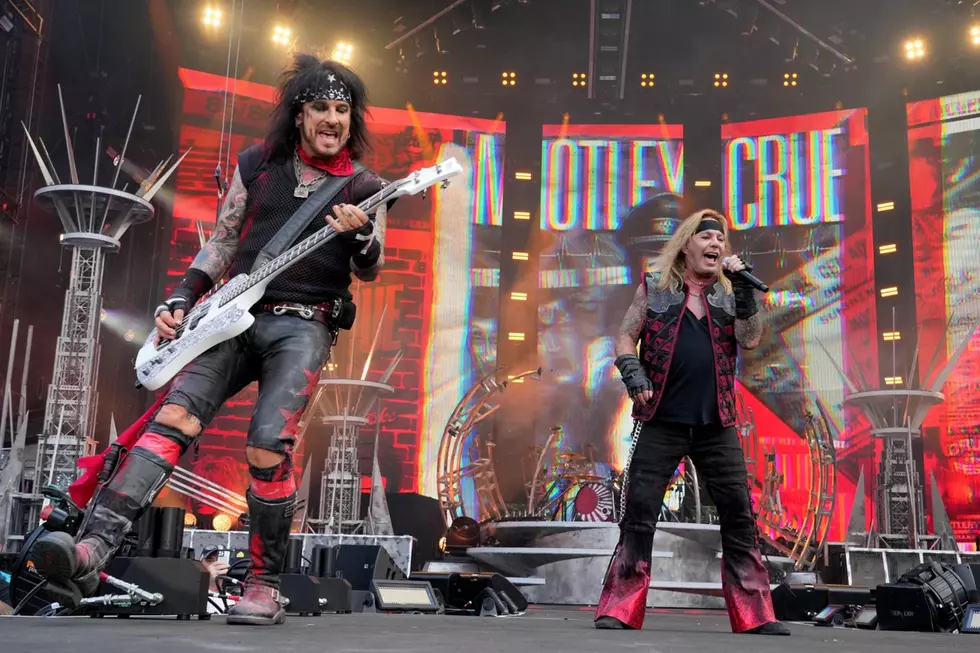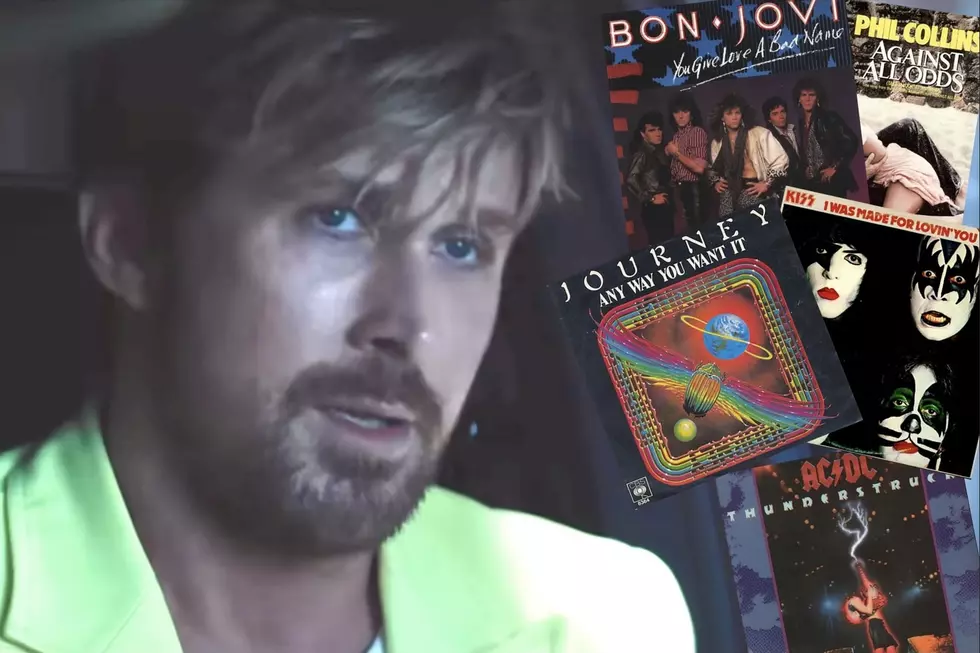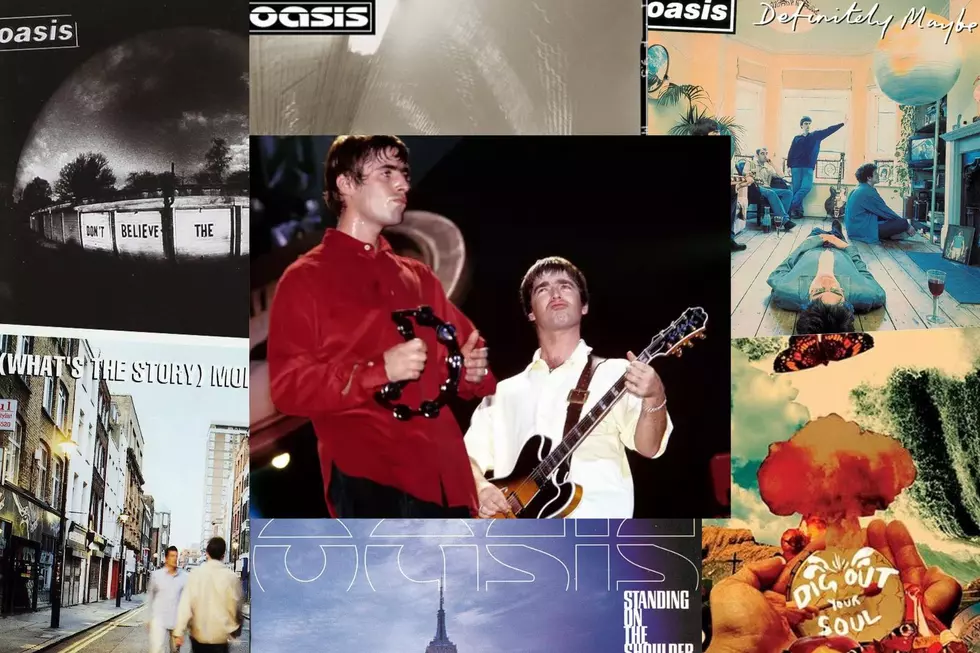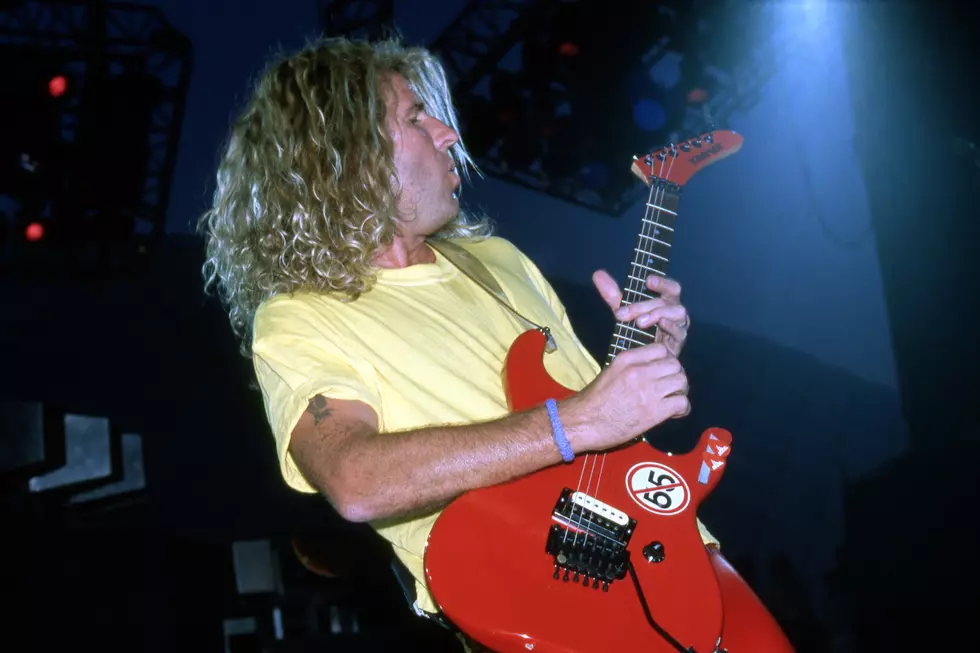
40 Years Ago: A Secretly Doomed Van Halen Launches the 1984 Tour
While the outside world watched them soar to dazzling new heights, Van Halen secretly knew they were doomed.
As the band kicked off their massive 1984 tour on January 18, 1984 in Jacksonville, Florida, everything seemed to be going their way. Earlier in the month they had released their sixth studio album, also named 1984, which found the group breaking new creative ground by fully incorporating keyboards into their sound. The album's first single, "Jump," was well on its way to becoming Van Halen's first-ever No. 1 single, and 1984 would go on to sell over 10 million copies.
The song's charmingly low-budget video was in heavy rotation on MTV, with the smiling faces of Eddie Van Halen, David Lee Roth, Alex Van Halen and Michael Anthony offering no sense that the band was actually in turmoil.
The keyboards that appeared on "Jump" and the follow-up No. 13 hit "I'll Wait," which not only helped earn Van Halen millions of new fans but also completely transformed the hard rock genre (for better and worse) for years to come, represented Eddie Van Halen's long-fought victory in a battle for more creative control over the band's music.
To overcome Roth and producer Ted Templeman's wishes for the group to stay focused on guitar-based music, and angered by the amount of cover songs he was forced to include on 1982's Diver Down, Van Halen built a recording studio at his own house, a move which put him in the driver's seat and left Roth at an unhappy strategic disadvantage.
Read More: Van Halen Albums Ranked Worst to Best
As the highly in-demand band packed 101 shows and the accompanying grueling travel into the mine-month long 1984 tour, their long-simmering personality conflicts and various worsening substance abuse issues quickly became unmanageable.
"We went out and had a great tour, [but there was] a lot of fighting on the road that year. There were a lot of nights that I can truthfully say I didn't enjoy going out and playing," Anthony explained in a 1986 Guitar World interview. "Only because I did not want to go out there and have to deal with Roth. He'd come up to me during a show while I was singing and throw his arm around me and go 'Yeahhhhhh!' And I'm looking at him going, what the hell is this guy doing? He's putting on a show for me too? You want to show the audience how we really feel about each other? Okay, we draw a big line right here in the middle of the stage and Roth you can stay there and I'll stay here."
In retrospect, the band's former manager says the number of light bulbs required for the tour should have been a warning sign. "Our stage show featured a lighting rig with more than two thousand lights. Even the biggest and most well-financed bands touring in those days settled for fewer than half that number," Noel Monk recalled in his book Runnin' with the Devil. "If you'd asked us, we'd have said that we were burning money to put on an unforgettable experience for fans; but in hindsight it was almost like we subconsciously knew it would be a farewell tour, and we wanted to go out in a blaze of glory."
How David Lee Roth and Eddie Van Halen Battled for the Spotlight
Roth and Van Halen's fight for creative control also manifested itself during the shows, as the duo bickered over who got more time alone in the spotlight. "All my solos end with a nod to Al [Van Halen], so I just keep going until I turn around," Eddie later explained. "I have no idea what's the longest I've gone – about 20 minutes, probably. That's when I started getting ragged on by a certain person: 'Your solo's gettin' too long!' I'd say, 'Fuck you. Your raps are getting longer!' It used to be nothing but talk, man. It was three-fourths talk. But as soon as I got up there to do my solo… he couldn't stop me anyway."
One of the most popular video bootlegs from the 1984 tour illustrates the result of this battle. About 33 minutes of the hour and 44-minute long April 19th Montreal show finds one of the band members performing by themselves, meaning they play together as a group for just an hour and 11 minutes.
Watch Van Halen's April 19, 1984 Montreal Concert
In his 1997 book Crazy from the Heat, Roth says the tour's constant bickering forced him to start plotting an escape. "I perceived that Van Halen was headed towards catastrophe. So do you ride the plane all the way into the sand? I said no, we'd already been through a year's worth of the Hatfields and the McCoys with the bottle of moonshine in between - and I'm not a Prince, I am not Mr. Not Guilty at all, but the chemistry between us was becoming morbid, it was becoming threatening and non-productive."
Even before the 1984 tour concluded on Sept. 2 in Nuremberg, Germany, Roth had begun recording songs for what became 1985's Crazy from the Heat solo EP. The rest of the story is well-known to Van Halen fans: His cover of the Beach Boys' "California Girls" reached No. 3 on the pop chart, he was offered the chance to star in his own movie, the band didn't want to wait for him, and instead recruited Sammy Hagar as their new lead singer for 1986's even more keyboard-dominated 5150. The movie deal falls through, Roth launches a full-fledged solo career and the two camps spend decades sniping at each other.
After a few aborted reunion attempts, Roth returned as Van Halen's lead singer in 2007, but Anthony was replaced by Eddie's son Wolfgang Van Halen, meaning the 1984 tour was the last time the original Van Halen lineup ever performed together.
"I often watched those shows with a mix of awe and sadness," Monk later recalled. "If not for the drugs, I thought, if not for the personality problems, these guys could run for the next 5 to 10 years. But I knew in my heart that it wasn't meant to last."
Eddie Van Halen Year by Year: 1977-2017 Photos
Gallery Credit: Matthew Wilkening
More From Ultimate Classic Rock









